I started my mission with a new pair of shoes. I wanted them to be part of my mission experience. I wore them every day until the end of my mission.
I served in Papua New Guinea. The best thing about serving there is that I had to learn to adapt to a new way of living. Everything about Papua New Guinea is different. I have been very fortunate to have lived in a few different countries growing up: Australia, New Zealand, and Fiji as well. I have also been blessed to have travelled to different countries as I was growing up.
Papua New Guinea is totally different.
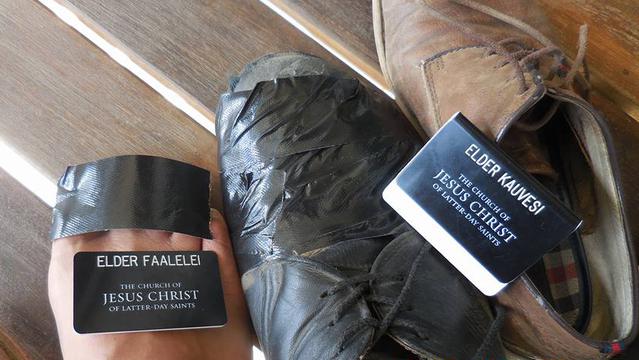
The people and the culture are unique, even the Church and how small it was then. It was exciting to be part of a mission where the Church was so young, and you could really see the growth of it every week.
In my first area of service, sometimes we would stay in the village where the Branch President lived. My companion and I would wake up at 4:30 in the morning to help teach seminary. The cool thing about seminary was that all of the kids, members or not, would bring their own lanterns so that we could study.

Afterwards, my companion and I would go down to the bank of the river, and we would use these little lavender flowers for our soap because normal soap was really expensive. This river bank is also where we would get our drinking water, where we would have our showers, and where we would wash our clothes.
Next we would have our personal scripture study. There is no electricity there, so everyone – all of us – would huddle around one big lantern to read our scriptures until the sun was high enough and it was bright enough to read.

After companionship study, we would work around that area and because it was a village surrounding, there were always many people to talk to. We tried to do as much service as we could. We would help to build houses or help people farm their gardens. We made it a habit to stop by to ask people if they needed help.
I was lucky enough to be able to travel to different parts of my mission during my service as a missionary, oftentimes with short notice. A senior missionary came into the office one day and said, “Elders, we have to go.” He pulled out a map and showed us a dot on the other side of the island. This dot, he said, was where a branch of the Church was located – one that was rarely visited because of the difficulty in getting there.

In order to get to Morovamu Branch, we first had to drive for seven hours to a town called Kerema. When we arrived in Kerema, we went over to talk to this lady selling produce. As we were talking to her and explaining who we were, we tried to give her a Restoration pamphlet, but she already had one. She said, "We used to have two young elders like you who lived here." My companion and I didn’t know that Elders had ever been in Kerema, so we asked for directions as to where they used to stay and began our walk to that village.
When my companion and I got to the main street of that village, a crowd began to gather on either side of the road. They yelled, “Elders!” then came over and surrounded us. It was pretty scary because we didn’t know what was happening. But they were members of the Church! They used to have missionaries who helped them to run their Sunday Church services, but because of a shortage of missionaries, they were transferred back to the city. When the last missionaries left, no one had replaced them, and over time they were forgotten. My companion and I were the first missionaries in three or four years to visit them.
We called our mission president, President Pita F. Hopoate, and told him that they still read the Book of Mormon and they would still pray, but they didn’t hold any Church services because they didn’t know how to run them. We were instructed to hold a special fireside-like meeting with all of the members of the Church living there. At that fireside, we taught all of the lessons from Preach My Gospel: A Guide to Missionary Service. It was a very spiritual experience. Because of the rapid growth after that special fireside, we now have a Branch there.
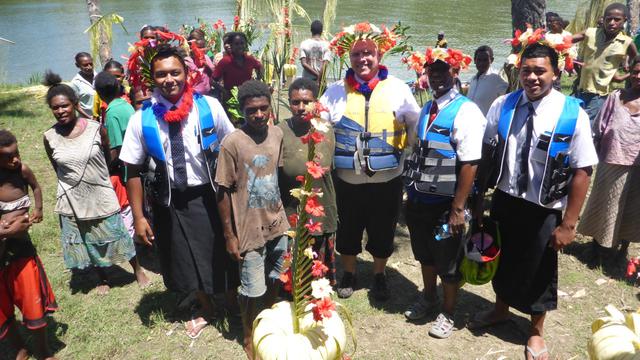
From Kerema we traveled the five-hour dinghy ride across the ocean to Morovamu village. They had built a little bridge to get up the mud bank and had decorated the chapel. They gave us flower hats and necklaces. They organized classes for the next two days, and straightaway we started teaching.

One of the things that we noticed was that they would pray in “skeleton” form. Literally, “Father in Heaven, we thank thee, we ask thee,” and close the prayer. One of the coolest things was being able to teach them to pray from the heart.
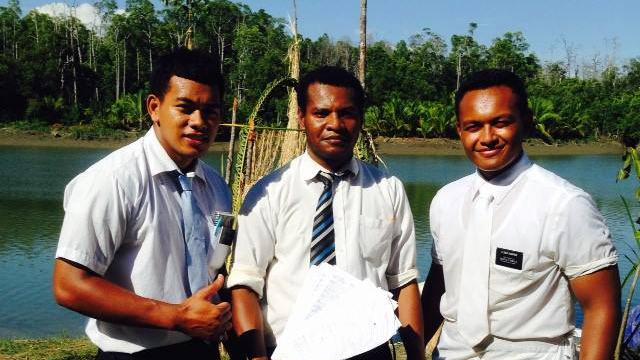
We didn’t really have to teach them; we just asked,” What are you thankful for?” and “What would you ask the Father for?” And so we created a list, and then we asked the local branch president, in front of all of the members, to close the meeting. It was the first time he prayed freely from his heart to the Father.
Everyone was crying. What made it such a great experience was that now the members knew that they could pray freely and from their hearts. They could have a conversation with their Father in Heaven.
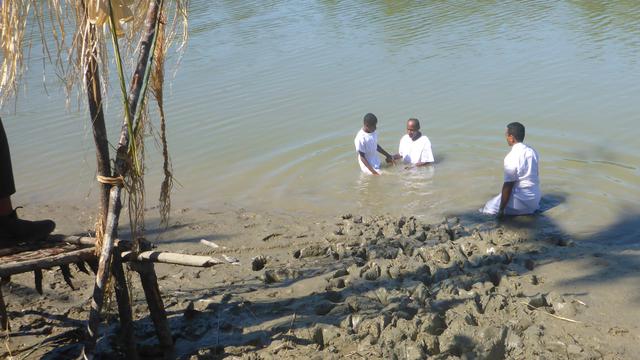
Once all the lessons were taught and reviewed, we then held a baptismal service for the members of the Morovamu Branch. But in order for some of the investigators to be baptized, they needed to be married first. The last couple was married at 10:00pm by lamplight the night before the baptisms. The next day President Naia was able to baptize his own Mum and Dad. After the baptisms were the confirmations.

The following Sunday, all of the males were ordained to the Aaronic Priesthood. We ordained the first male and he would ordain the next, and then he would get up and ordain the next one, so all of them could begin exercising their priesthood authority.
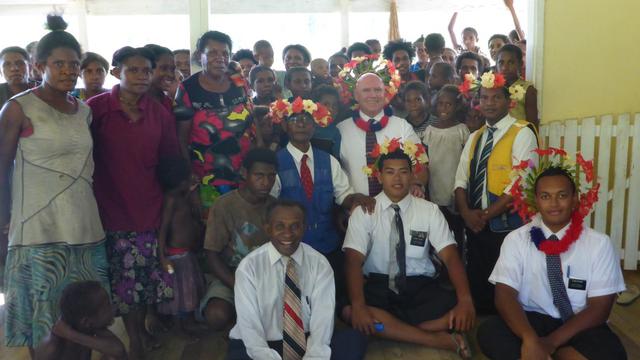
I wanted to wear only one pair of shoes during my time as a missionary. I wanted to do this for my posterity, to be able to show them something physical from my time serving. I wanted to show them what I felt hard work and dedication looked like to me. I wanted to show them what effort and sacrifice looked like to me. I wanted to show them that I was willing to do whatever Heavenly Father was asking me to do – during my time as a missionary, and after. I was trying to be an example because I would want them to do the same.
Of course, a pair of broken and worn shoes doesn’t look like much. But to me, and hopefully to my posterity, they will always symbolise my love for my Saviour and my Father in Heaven as well as the love I grew to have for my brothers and sisters. It symbolises what I’m willing to do to show the love that the Saviour has for all.